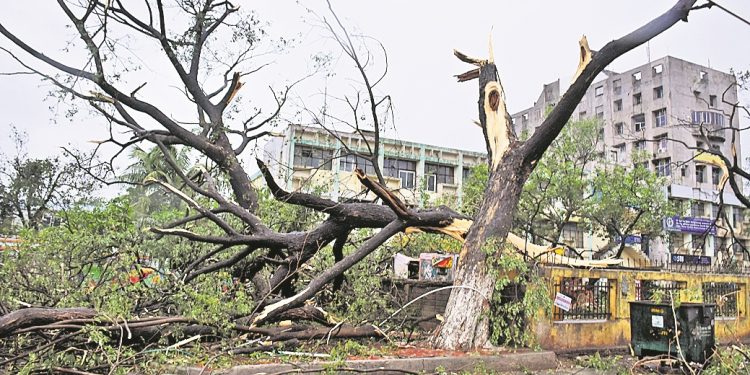Natabar Khuntia
In recent years, cyclones have been affecting Odisha frequently and costing lives and livestock besides inflicting heavy damage to property, washing away government infrastructure and crippling lives, livehihood, public utility services and agriculture. Climate change has raised frequency of cyclones and the numbers are only going to increase. We cannot stop cyclones can minimize their adverse impact. Cyclone Fani, which made landfall May 3, has damaged several thousand houses and trees and uprooted several utility poles. It has affected 14 million people in 16,000 villages and 51 urban local bodies in 14 districts.
Though Odisha was widely praised for its efforts to ensure safety of people the challenge now is to rehabilitate the affected people. The damage Fani has caused is worse than feared. The government machinery was ill prepared to meet the challenge.
The death toll has risen to 64, thousands of kutcha houses and buildings with asbestos roofs have either collapsed or have been blown away. Power supply has been disrupted heavily. Drinking water is not available and most trees are uprooted. Though ODRAF and NDRF teams are working hard to clear roads, the task is stupendous and impossible to satisfy all.
Gram panchayats should be given power to provide relief immediately after a calamity, without awaiting government instructions under standard guidelines
Relief is not reaching affected villages. Victims are outraged. Other states are also going slow on relief as loss of life is minimal. The state should request the help of the Army to speed up rehabilitation efforts. But the state’s ego is preventing such a move and the affected people are revolting.
Under the circumstances, the state government should immediately take the assistance of the Army to rehabilitate people. The following short-term measures could be taken to help farmers grow crops to compensate for loss caused by Fani, since the Kharif season is fast approaching.
The state government should undertake a quick survey to identify land-owning and landless sharecroppers and pay them Rs10,000 each in one instalment instead of two under KALIA scheme. Farmers’ list should be submitted to central government to enable them to pay Rs6,000 per farmer instead of in three instalments under PM-KiSaN. Quality Seeds, fertilizers, and pesticides, among other things should be available to them at subsidized rates at panchayats. The agriculture extension agency should reach farmers in time to guide them to improved methods of cultivation. Affected houses should be repaired on war-footing before onset of monsoon.
Also, the following long-term measures should be taken to minimise the effects of such calamities in future.
All kutcha and asbestos- or tin-roofed houses should be converted to pucca buildings. Power supply systems should taken underground. Electric poles should be made cyclone-resistant. Each village should have overhead drinking water tanks with diesel generator facilities. Deep bore tube-wells with manual lifting facilities should be considered.
Gram panchayats should be given power to provide relief immediately after a calamity, without awaiting government instructions under standard guidelines. Every panchayat should have modern godowns with relief materials for distribution in need; panchayats can utilize this without awaiting arrival from distant places.
The forest and horticulture departments should decide what species of plants would be planted by roads such that they are less vulnerable to damage and uprooting. Pruning trees by the road should be ceremoniously done before monsoon sets in.
This will require heavy investment, which the state government cannot arrange from its own resources. A Calamity Relief Fund may be created and the central and state governments should be appealed to contribute to it. Business houses and industrialists from the country and abroad should be appealed to contribute generously to the fund.
Unless these long-term measures are taken to minimise the effects of cyclones, only evacuation will not be a solution.
The writer in an agro-banker and columnist.







































